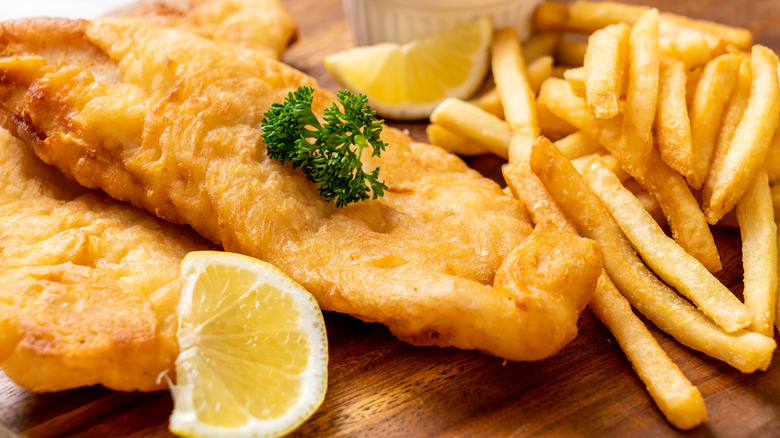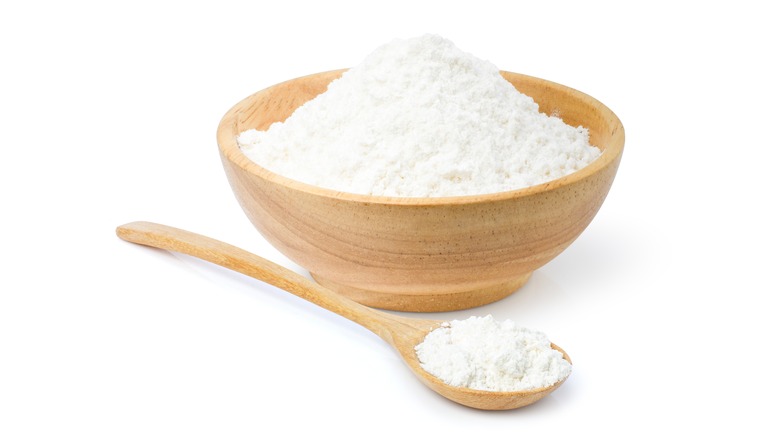The Absolute Best Batter For Travel-Ready Fried Fish
When in the Midwest, one is bound to come across friendly folks, chilly temperatures, and hearty comfort food. The kringles and deep dish pizza are definitely must-haves, but the fish fry is probably one of the most well-known fried platters in the entire region.
Culver's explains that a dinner roll with butter, coleslaw, French fries, and condiments like lemon wedges and tartar sauce all accompany the golden-brown pieces of fish, which are crispy on the outside and tender on the inside. In addition, fish like walleye, cod, and perch are often used, which are then coated in a beer batter and fried to perfection, per Travel Wisconsin.
But there's one problem with fish fry: It doesn't travel well. It's made to be consumed fresh out of the fryer, which leads to problems if you want to take a homemade batch over to a dinner party. Fortunately, there's a simple solution for this, and it has to do with the fish batter.
Use tapioca starch and rice flour
Food & Wine spills the secrets to the best-ever batter for travel-ready fried fish, and it starts with a combination of tapioca starch, rice flour, and a few seasonings like Korean chile flakes, garlic and onion powders, and turmeric. The fish fillets are coated in this dry mixture and then set aside. Now here's where the real magic happens: Club soda is poured into the mixture to form a wet batter, which is then ready for the fish. After a second coating, the fish fries for a few minutes and rests on a wired rack.
This batter has three major elements: club soda, tapioca starch, and rice flour. With regards to the club soda, Cook's Illustrated experimented with tempura batter and found that club soda weakened the gluten and made the textures lighter and airier.
Tapioca starch and rice flour also play a part in making foods ultra-crispy, but they also seem to aid in the "travel-ready" aspect of fried fish. Food Network says tapioca starch makes a wonderful, long-lasting crust that is incredibly crunchy, while USA Rice notes that unlike other types of flour, rice flour doesn't absorb that much oil. Because of this, there might be an implication that there is less oil weighing down the finished batter, which may result in crispy fish that doesn't get soggy as quickly.

